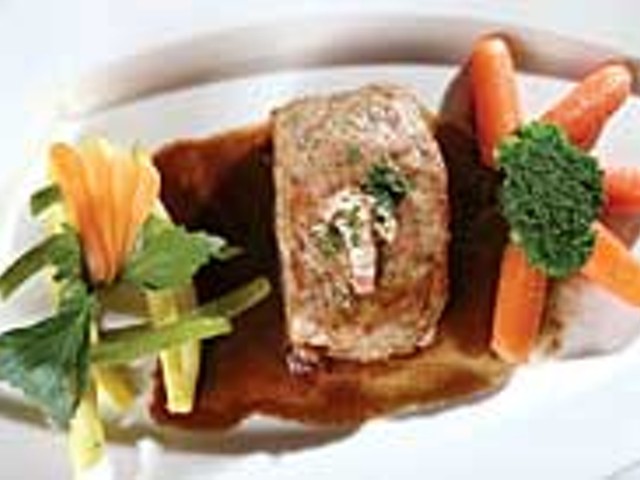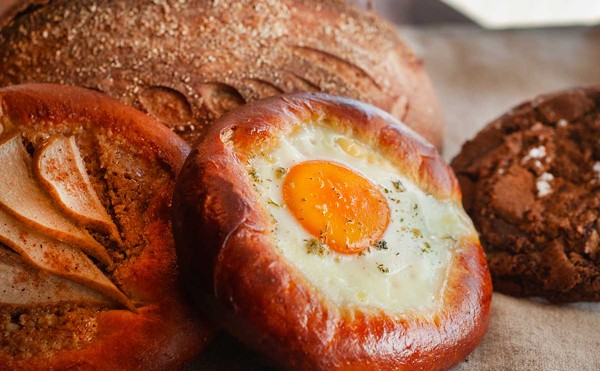Like many other food items that are a point of national pride, the simple scone and its origins are claimed by more than one nation.
I’m fairly satisfied, however, that it comes to us from the Scots. Others throw in with the Dutch because its name is supposed to be similar to the word schoonbrot, meaning “beautiful bread.” It was popularized by the English as a teacake, even a delicate one, though the first examples were heavy, triangle-cut quick breads made with oats and cooked over an open fire on a griddle (then called a “girdle,” which could be extrapolated into a totally manufactured link to “jelly,” but I’ll leave it alone).
Several sources, including the highly authoritative Larousse Gastronomique, trace the name to Scotland’s Stone of Destiny, where its kings were once crowned. That’s apt, because some scones I’ve eaten could easily have been used to stone a hapless adulteress.
But the recipe I’m offering here, adapted from Nick Malgieri’s terrific book, How to Bake, is as far removed from those as you’re liable to find. (It’s my favorite, though it only recently knocked off to second place the scones made by my friend and former Detroit Monthly colleague Steve Bitsoli, who now reviews restaurants for the Macomb Daily.)
These have a lighter, cakier texture than traditional scones. And while it’s always prudent to handle biscuit and other quick bread doughs as little as possible to avoid toughness, this dough is light enough to allow rerolling scraps and using it all up.
They’re just sweet enough to be used like shortcake, topped with fresh strawberries or other fruits macerated in sugar. If you want to stick to British tradition, pick up a jar of clotted Devon cream in a gourmet food store, and thickly spread it on, with or without jam or preserves.
Rather than the milk-and-cream combination I recommend, you can use all whole milk, all cream, all buttermilk or a combination of any of them. If you like, add about 3/4 cup of any dried berries or cherries to the dry ingredients before mixing with the wets.
Tea Scones, Not Stones
Adapted from How to Bake, by Nick Malgieri
Makes 18-24
3 cups all-purpose flour
1/3 cup sugar
1 tablespoon baking powder
1/2 teaspoon salt
6 tablespoons cold, unsalted butter, cut into 12 pieces
3/4 cup whole milk
1/2 cup heavy (whipping) cream
Egg wash (1 egg beaten well with a good pinch of salt)
1. Set rack in the middle of the oven and preheat to 450 degrees.
2. Combine dry ingredients in the bowl of a food processor, add butter and pulse carefully just until mixture looks evenly mealy. Then, with machine running, pour liquid ingredients in a steady stream and stop processing as soon as the dough gathers together into a ball, clearing the sides of the bowl. (You can do this by hand, rubbing the butter and flour mixture together with your fingertips until mealy, then stirring in wet ingredients.)
3. On a lightly floured surface, knead dough by hand for just a few turns, then press and roll it out into a roughly 10-x-15 inch, 1/4-inch thick, rectangle.
4. From the long side, roll dough up like a jelly roll (yeah, jelly roll), then flatten and fold in half across the width. Roll out until 1/2-inch thick.
5. Cut the scones with a floured plain or fluted round cutter, and transfer them to a cookie sheet or jelly-roll pan lined with parchment paper or a silicone baking mat. Gather up scraps, roll out again, and cut more, repeating until you’ve used all the dough.
6. Brush scone tops with egg wash (I also like to sprinkle them with a little raw sugar) and allow to dry for 10 minutes.
7. Bake for about 15 minutes, until firm but not dry and not too brown. Serve.
8. Once cool, freeze any leftovers. (To use, thaw, then reheat at 350 degrees for about 10 minutes.)
Ric Bohy is editor of Metro Times. Send comments to [email protected]




